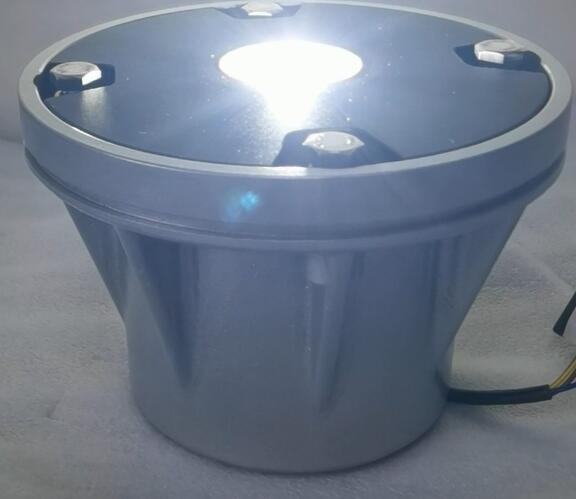The FAA heliport lighting requirements are vital guidelines that ensure the safety and operational efficiency of heliports across the United States. These requirements provide a standardized approach to lighting design, helping pilots navigate safely during landings and takeoffs, particularly in low-light or adverse weather conditions. This article delves into the essential aspects of FAA heliport lighting requirements and explores the key considerations for meeting these standards.
The Role of Lighting in Heliport Safety
Heliport lighting serves as a visual aid for pilots, providing critical information about the location, size, and condition of the landing area. Properly installed and maintained lighting reduces the risk of accidents, facilitates smooth operations, and ensures compliance with FAA regulations. For heliports located in urban areas, remote locations, or near potential obstacles, adhering to FAA heliport lighting requirements is especially crucial.
Key FAA Heliport Lighting Requirements
The FAA has established detailed guidelines for heliport lighting in its Advisory Circular AC 150/5390-2C. These requirements cover lighting systems for hospital, private, and transport heliports, addressing both mandatory and recommended practices. Below are the essential components:
1. Perimeter Lighting
Perimeter lights define the boundary of the heliport’s Final Approach and Takeoff Area (FATO) and Touchdown and Liftoff Area (TLOF). According to FAA heliport lighting requirements, these lights should be green and evenly spaced to ensure maximum visibility for approaching pilots.

2. Floodlighting
Floodlights illuminate the landing surface, enabling pilots to identify obstacles and assess the heliport’s condition. These lights must be positioned to minimize glare while providing uniform lighting across the area.
3. Approach Lighting System (ALS)
An ALS helps pilots align with the heliport during the approach phase. This system may include sequenced flashing lights or steady-burning elements, guiding pilots effectively to the landing zone.
| faa heliport lighting requirements |
| faa heliport lighting requirement |
4. Windsock Illumination
A properly lit windsock is essential for indicating wind direction and speed. FAA guidelines recommend that windsocks be illuminated for night operations to provide pilots with critical information about wind conditions.
5. Obstacle Lighting
Heliport lighting must also include red or white lights to mark obstacles such as buildings, poles, or antennas. These lights must be highly visible to prevent potential collisions.
Compliance with FAA Standards
Meeting FAA heliport lighting requirements involves careful planning, installation, and maintenance. Compliance ensures that the heliport remains operational under diverse conditions while providing safe and reliable services. Key elements of compliance include:
Lighting Intensity and Color
The FAA specifies lighting intensity and color to enhance visibility. For instance, perimeter lights must be green, and obstacle lights should be red.
Spacing and Placement
Proper spacing and placement of lights are crucial to avoid confusion and maintain uniformity. The FAA provides specific measurements for spacing between lights based on the heliport’s design and purpose.
Backup Power Systems
Heliports must have reliable backup power systems to ensure uninterrupted lighting during power outages, as mandated by the FAA.
Considerations for Implementing FAA-Compliant Lighting
When designing a heliport lighting system that meets FAA requirements, several factors come into play:
1. Environmental Impact
The surrounding environment, including natural terrain and urban infrastructure, influences the design and placement of heliport lighting. Systems must account for potential visual obstructions and ambient light.
2. Energy Efficiency
Modern lighting solutions, such as LED lights, provide energy-efficient alternatives that comply with FAA standards. These lights reduce power consumption and maintenance costs while maintaining brightness and reliability.
3. Durability and Maintenance
Heliport lighting systems must withstand extreme weather conditions. Using durable materials and implementing regular maintenance schedules ensure long-term functionality.
4. Customization for Specific Needs
Each heliport has unique requirements based on its purpose and location. For example, hospital heliports may need enhanced lighting systems to accommodate emergency operations.
Advancements in Heliport Lighting Technology
The aviation industry has seen significant advancements in heliport lighting technology, which can enhance compliance with FAA heliport lighting requirements.
Solar-Powered Lighting
Solar-powered lights offer an eco-friendly and cost-effective option for remote or temporary heliports. These lights are self-sustaining and ideal for areas with limited access to the power grid.
Wireless Control Systems
Wireless technology allows for remote control of lighting intensity, activation, and patterns, improving operational flexibility.
Smart Lighting Systems
Automated systems equipped with sensors can detect approaching aircraft and activate lights only when needed, reducing energy consumption and extending system life.
Challenges in Meeting FAA Heliport Lighting Requirements
While adhering to FAA heliport lighting requirements is essential, operators may face challenges such as:
Budget Constraints
High-quality lighting systems can be costly, making it challenging for smaller operators to meet requirements.
Urban Restrictions
Urban heliports often face challenges related to light pollution and space constraints, requiring creative solutions to meet standards.
Regulatory Updates
Staying updated with changes to FAA guidelines is critical to maintaining compliance and avoiding penalties.
FAA heliport lighting requirements are the cornerstone of safe and efficient heliport operations. By understanding and implementing these standards, operators can enhance safety, reduce risks, and ensure smooth functionality. As technology continues to evolve, heliport lighting systems will become even more advanced, further improving compliance and operational efficiency.